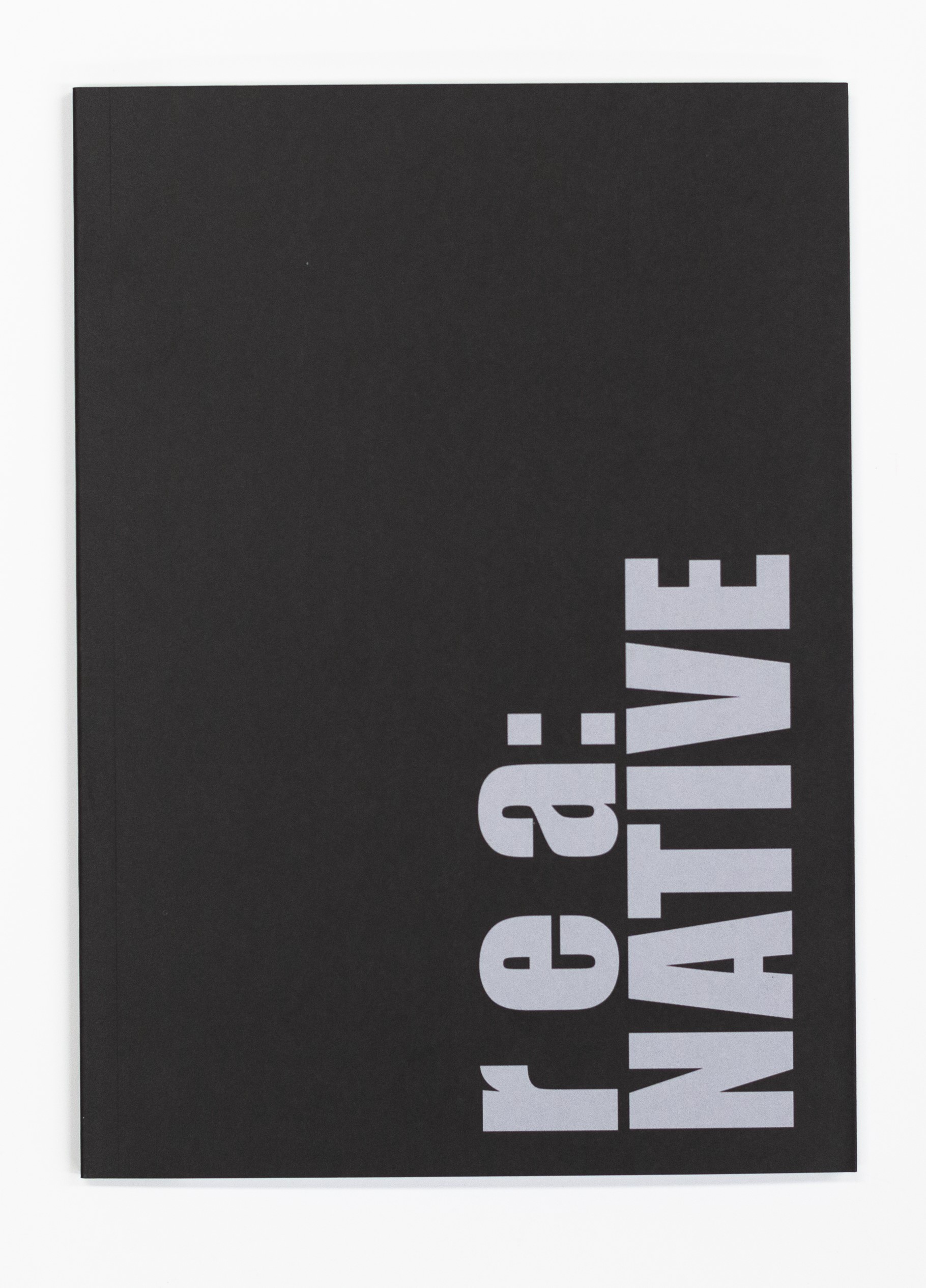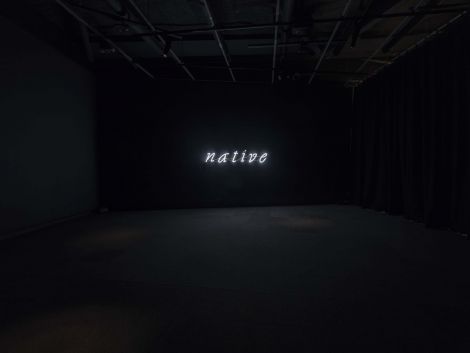Image: ‘r e a: NATIVE’ (detail), 2024. Installation view of ‘r e a: NATIVE’ at Griffith University Art Museum, 6 June – 3 August 2024. Photo: Carl Warner. Image courtesy of the Artist
6 June – 3 August 2024
For over three decades, r e a, a descendant of the Gamilaraay, Wailwan and Biripi peoples, has worked at the forefront of Australian Indigenous new media theory and practice in Australia and internationally. An artist, curator, activist, researcher and cultural educator, r e a explores themes of Indigenous identity, representation and the post-colonial experience across mediums, including photography, digital media, film, video and installation.
r e a is the artist and author’s full name. Due to Western and academic naming conventions, some of r e a’s writings have been published under the names r e a Saunders and Dr Regina M. Saunders (Morris). r e a also uses the name r e a noir as a play on the colour black and the French Impressionist painter Pierre-Auguste Renoir.
r e a: NATIVE comprises two interrelated installations delving into the historical and colonial archive. In the first room, we present a remastered iteration of r e a’s Native, 2013, a site-responsive sound and neon installation which was first developed as part of their Indigenous Artist Residency at the Blacktown Arts Centre in 2013. In the second gallery, Native (yugal/song), 2024, incorporates video and motion sensors that enable viewers to use their bodies to experience sound and to perceive it in a visual form. The conceptual and physical touchstone of both installations is the Blacktown Native Institute, founded in Parramatta in 1815 and relocated to Blacktown in 1823, one of the first sites in Australia where Aboriginal children were removed from their parents and institutionalised. This resonated with r e a’s knowledge of their maternal grandmother’s experiences as a child of The Stolen Generation and how intergenerational trauma is passed on. However, the project extends beyond this focal point, offering broader reflections on how their body processes language when immersed in the archive, reclaiming and Indigenising r e a’s history, language and identity.
This exhibition coincides with the International Symposium on Electronic Art (ISEA) which brings together artists, scientists and scholars from around the world to explore the intersection of art, science and technology in Brisbane from 21-29 June 2024. This year’s conference theme, Everywhen, explores the human perception of space and time. This word describes the notion that past, present and future are co-habiting in any given location.
A new monograph publication with contributions from Franchesca Hebert-Spence, Anne Marsh and exhibition curator Angela Goddard accompanies this exhibition.

Image: ‘r e a: NATIVE’ Publication. 240mm(H) x 170mm(W), 48 pages, paperback. $15.00 Photo: Patrick Lester
Pixy Liao
Born 1979 Shanghai, China; lives New York, United States of America
Pixy Liao uses photography, video, and installation to question stereotypical representations of couples, artists, and the female experience. Some of these intimate, humorous photographs are from Liao’s Experimental Relationship project, 2007 – ongoing. For Liao:
As a woman brought up in China, I used to think I could only love someone who is older and more mature than me, who can be my protector and mentor. Then I met my current boyfriend, Moro. Since he is 5 years younger than me, I felt that whole concept of relationships changed, all the way around. I became the person who has more authority & power. One of my male friends even questioned how I could choose a boyfriend the way a man would choose a girlfriend. And I thought, ‘Damn right! That’s exactly what I’m doing, & why not?!
In her photographs, Liao often portrays herself in a dominant role while her boyfriend assumes a more submissive position in order to break the predominant relationship model and experiment with new modes of being together.
Lin Zhipeng (aka No. 223)
Born 1979 Guangdong, China; lives Beijing, China
Lin Zhipeng (aka No.223) is a leading figure in contemporary Chinese photography. Selfnamed after the lovelorn Hong Kong police officer in Wong Kar-wai’s 1994 film Chungking Express, 223’s photographs capture the need to love in an otherwise indifferent society. Documenting the ecstasy, eroticism and esotericism of life amidst an often-closed traditional culture, his photographs act as a collective not-so-private diary of a generation pushing against the limits of the rigid social rules of conservative Chinese society. This presentation is comprised of photographs, dating from 2007 which demonstrate the arcs and parameters of his practice. Confidently flash-lit and playfully posed 223’s photographs show you that relationships will continue even as they change. Your friends will grow old, their homes might shift from Beijing to Paris, and some lovers may depart while others choose to stay. In 223’s photographs we see bodies immersed in milky waters or decisively slumped against the wall. These are bodies that are not explicitly working but neither are they at rest. Embodying the messiness of human relationships, his work is equal parts surprising and sanguine, mundane and melancholic, yet always beautiful.


